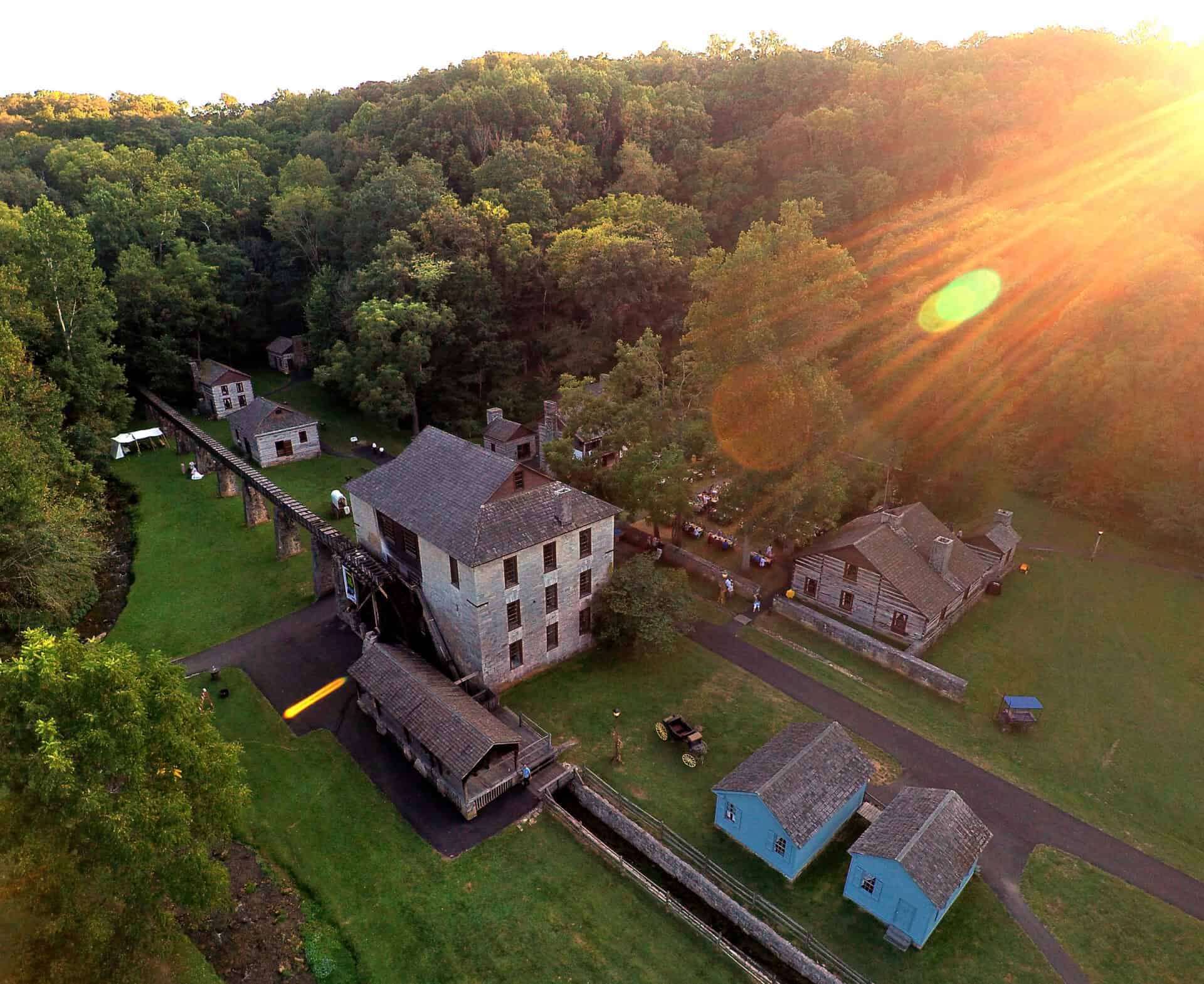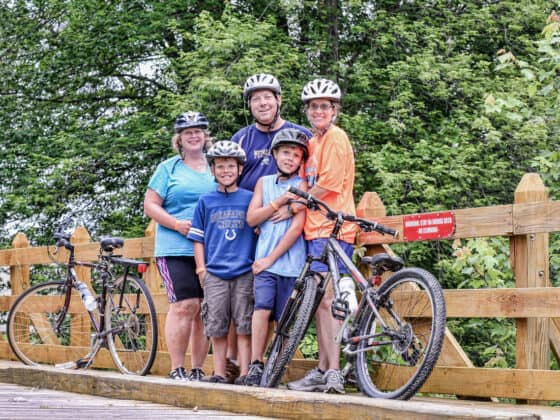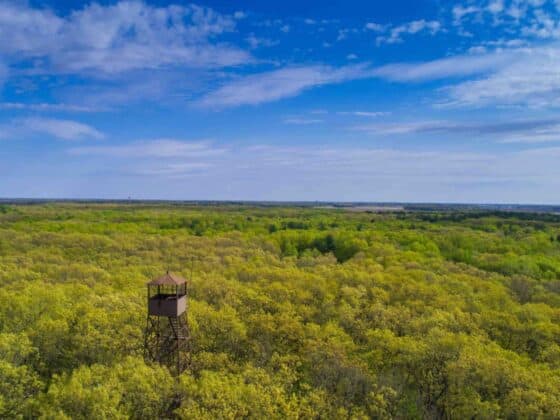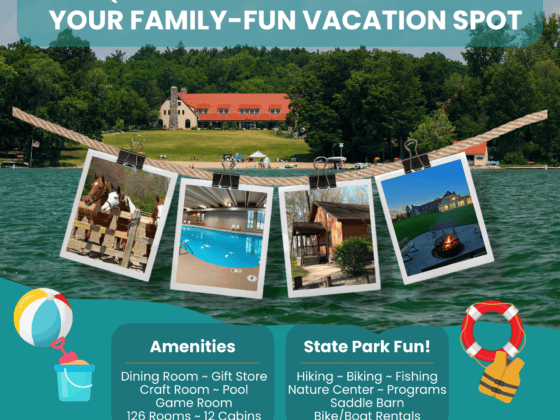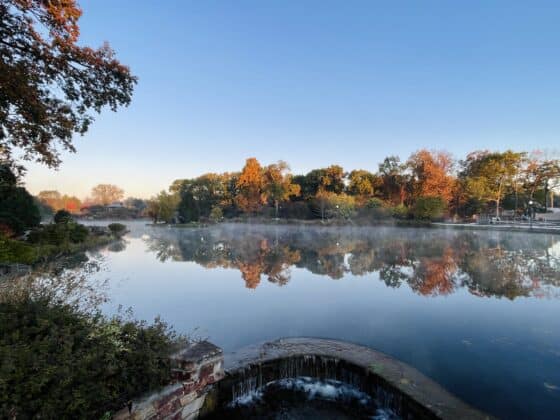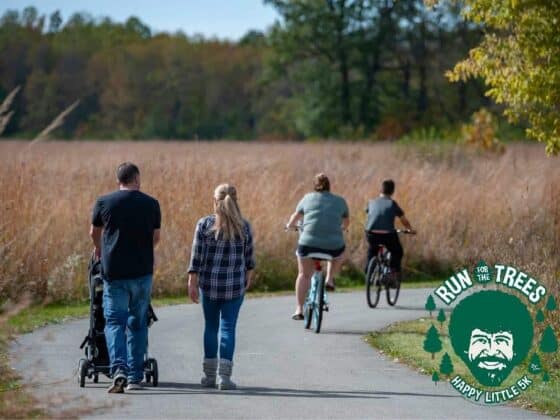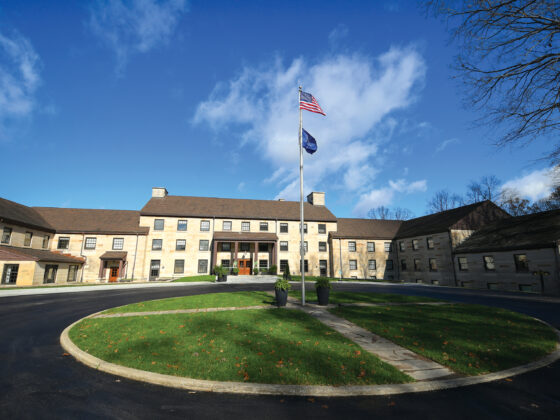story and photos by INDIANA DNR
McCormick’s Creek was Indiana’s first state park, and its spectacular scenery shouts why. The park’s storied history lends even more reason to head to Spencer, in Owen County, to experience a place Hoosiers have flocked to since 1916.
Part of the Indiana Birding Trail, with 100 species commonly found, the 1,961-acre park offers nearly four miles of hiking, even with some closures because of the tornado that hit parts of it last spring. Trail 4, the Fire Tower Trail, leads to the structure built in the 1930s by the Civilian Conservation Corps (CCC). Climbing it provides a bird’s-eye view of the tree-covered, rugged surroundings. The CCC also built most of the park’s shelter houses and its old stone bridge.
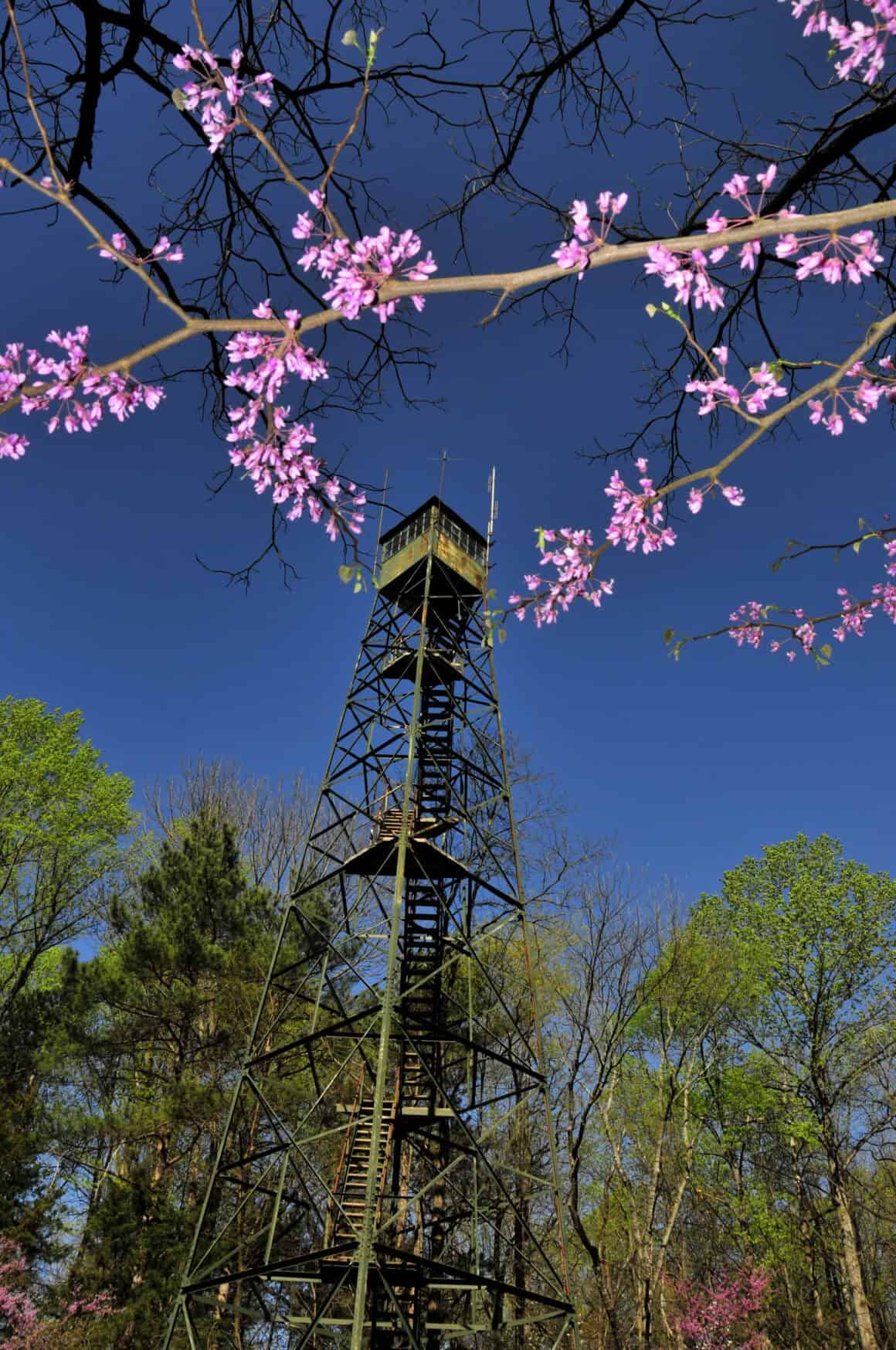
For a beautiful view with your feet still grounded, Trail 3 provides a look at the park’s largest waterfall and the limestone canyon for which its inn is named.
Expect wildflowers to color your travels, including more than 10 species of orchids, as well as Virginia bluebells, spring beauty, shooting star, firepink, and more.
To learn about local pre-CCC history and area life before the park, visit the remains of Peden Farm, just off Trail 9. Nancy Peden was the daughter of John McCormick, the area’s first settler. She and her husband Jesse lived on the farm until her death. You’ll see the springhouse they used, restored by the park’s Friends group, along with the remains of their original barn and cabin.
The park’s fossilized corals tell of Indiana’s time as a shallow, tropical ocean, bits of granite swept down from Canada hint at its glacial story, and flint artifacts reflect the area’s Native American past as shared hunting grounds for the Delaware, Miami, and Shawnee.
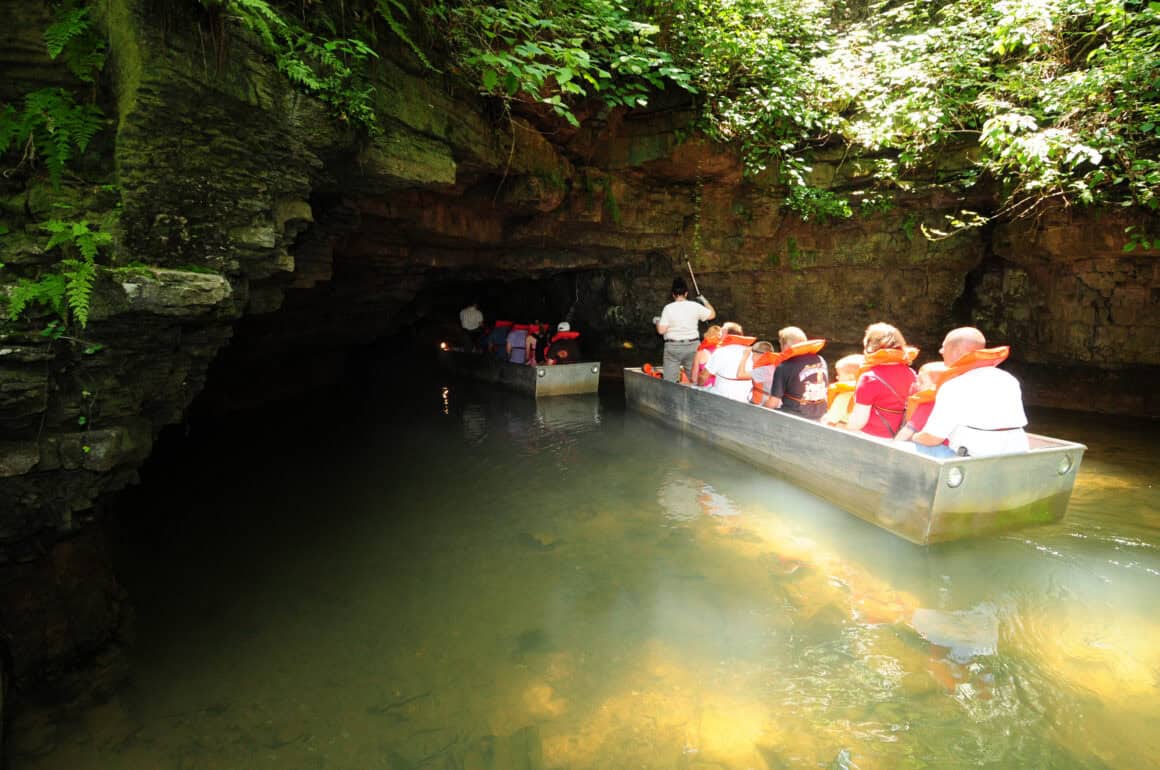
To learn more area history, natural and otherwise, visit the Nature Center, where the tradition of Indiana State Parks’ first interpretive naturalist, Lucy Pitschler, who worked at the park, is carried on by Kody Kirby and his wide variety of programs.
Guests who want to stay overnight can choose from the comfort and history of Canyon Inn or the extra room, convenience and privacy of family cabins. Either can be reserved at IndianaInns.com or 877-LODGES-1 (877-563-4371). Doing either—or just entering the park—also gives you the chance to dine at one of the area’s best family restaurants, the inn’s dining room, which features a giant picture window framing bird feeders.
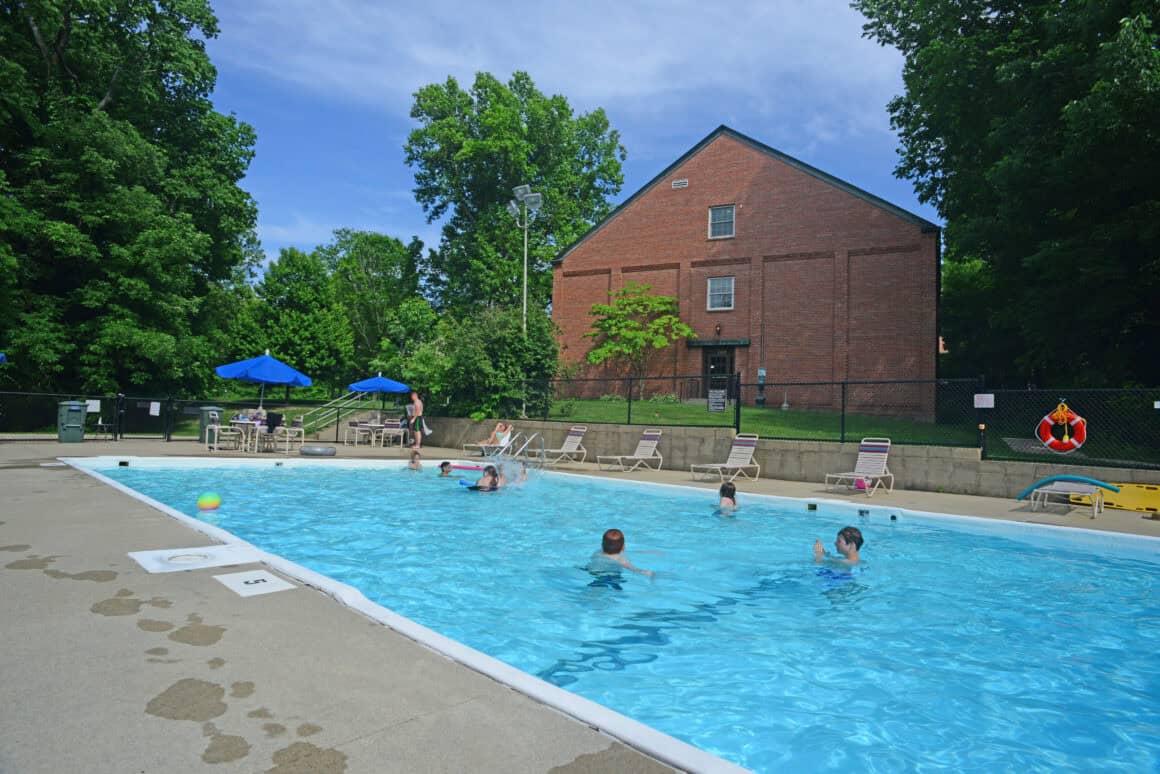
The inn’s site was recognized as a place to get away in the late 19th century when Dr. Frederick Denkelwater bought land and built a sanitarium there. After his death in 1914, the state bought it. The park’s original inn opened in the building, it was remodeled in the early 1920s, and later changes brought new wings, a banquet room, a swimming pool, and recreation center; however, the inn still rests on the original foundations.
For updates on all the goings-on, as well as even more opportunities as work is completed, see on.IN.gov/McCormicksCreek.
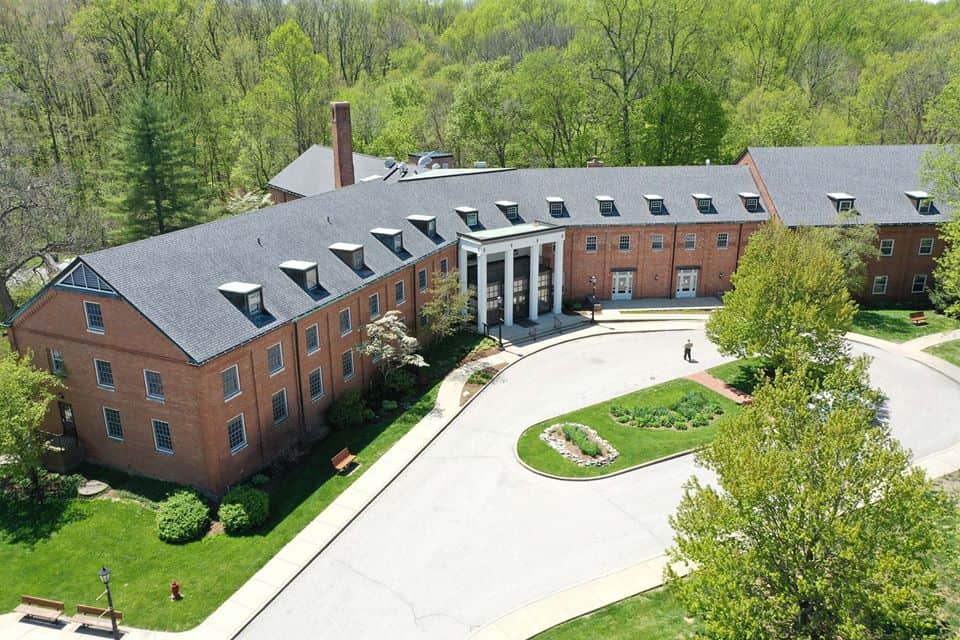
As part of the effort to revitalize McCormick’s Creek’s campground, some trees downed by the storm are being used at another must-see destination, Spring Mill State Park, to restore the flume that brings water to its historic grist mill. Such restoration is periodically needed to keep the mill operable.
Indiana’s perhaps most versatile state park, it offers the chance to stay in one of its 177 electric campsites or visit for the day while its historic inn is being renovated. Another Indiana Birding Trail member, the 1,672-acre park in Lawrence County near Mitchell boasts a rare blend of historic and natural wonders. The water from several cave springs led to the founding of an industrial village in the early 1800s, and today you can step back to the 1860s at the Pioneer Village, much of which was restored by the CCC. If you need to cool off while there, take off your shoes and step into the creek that powered the mill, which hovers at 55 degrees year-round.
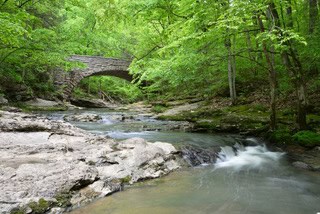
Donaldson’s Woods Nature Preserve, along Trail 3, provides a hike through an old growth forest.
If you work up sweat, head to the entrance of Donaldson’s Cave for a blast of cold air. For a wet-cave experience, take the guided boat tour through Twin Caves.
For more modern area history, hit the park’s museum that honors astronaut and local product Gus Grissom. It houses the Gemini III space capsule he took into space.
See on.IN.gov/springmill for more about what you can do at this park and what awaits after its updates are complete.


